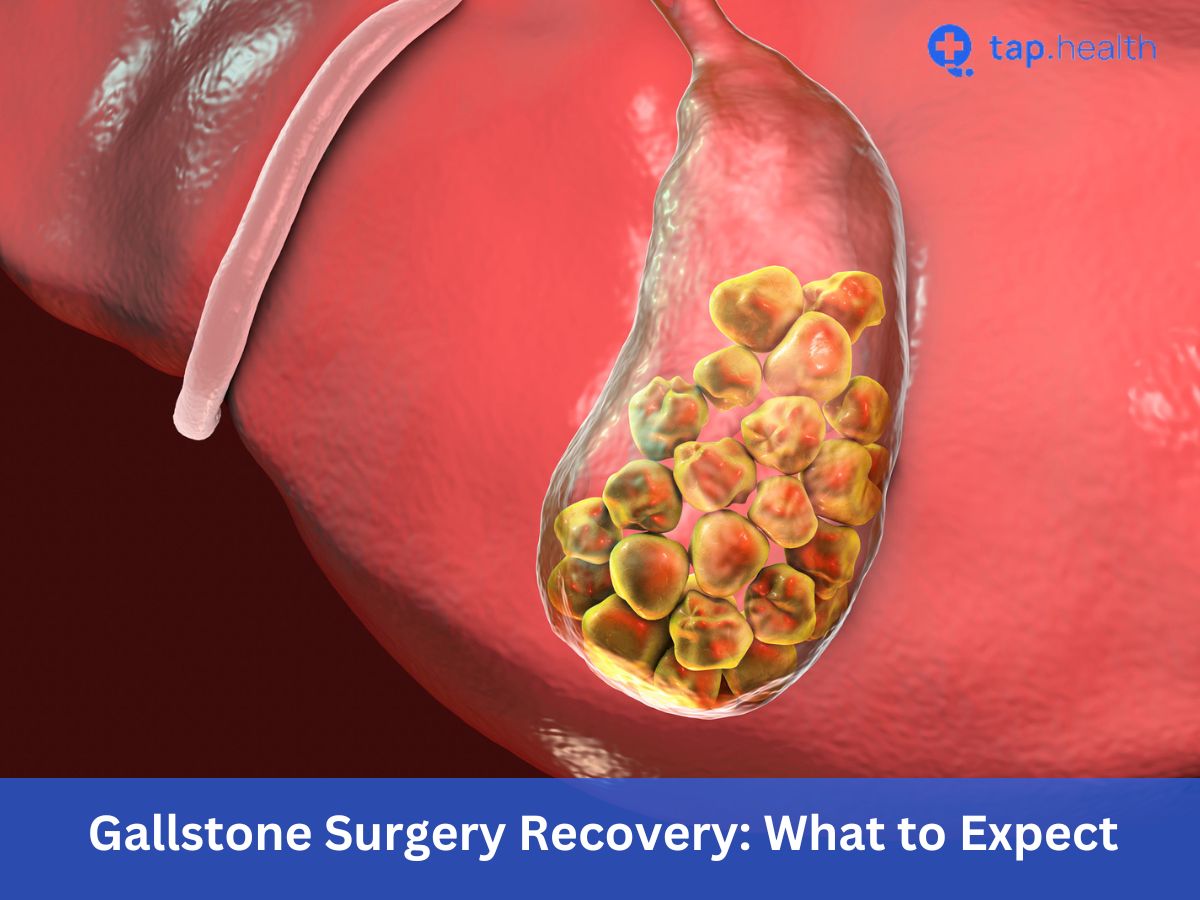Gallstone surgery, or cholecystectomy, is a common procedure to remove the gallbladder and alleviate symptoms caused by gallstones. Understanding the recovery process is crucial for preparing mentally and physically. This guide outlines what to expect during recovery, from the first few days to full resumption of normal activities, incorporating practical tips and addressing common concerns.
What Is Gallstone Surgery Recovery Like?
Gallstone surgery recovery varies by individual but generally spans 4-6 weeks. The process involves rest, pain management, incision care, dietary adjustments, and gradual increases in activity. Proper care during this period minimizes complications and promotes healing. Below, we break down the recovery timeline, addressing key aspects like post-surgery care, diet, and activity levels.
Immediate Post-Surgery Care: First Few Days
The first few days after gallstone surgery are critical for healing. Your body needs time to recover from the procedure and anesthesia. Here’s what to focus on:
- Rest and Relaxation: Stay home and avoid strenuous activities. Limit physical exertion to short walks to promote circulation. Adequate rest helps your body heal without added stress.
- Pain Management: Expect discomfort around the surgical site. Take prescribed pain medications as directed to manage pain effectively. Monitor pain levels and report severe or worsening pain to your doctor.
- Incision Care: Keep incisions clean and dry using mild soap and water. Change dressings as instructed and watch for signs of infection, such as redness, swelling, or discharge.
- Hydration: Drink plenty of water and clear fluids like broth or herbal tea to flush out anesthesia and support tissue healing. Avoid caffeine and alcohol, which can cause dehydration.
Diet After Gallstone Surgery: What to Eat
Diet plays a vital role in recovery, as your digestive system adjusts to the absence of the gallbladder. Here’s a breakdown of dietary guidelines:
- Clear Liquids Initially: Start with clear liquids like water, broth, and gelatin to ease your stomach and prevent nausea.
- Gradual Progression: Transition to a low-fat diet with small, frequent meals. Include lean proteins, fruits, vegetables, and whole grains. Avoid heavy, fatty meals that may cause discomfort.
- Foods to Avoid: Steer clear of high-fat foods (e.g., fried items, fatty meats, full-fat dairy) and gas-producing foods (e.g., beans, cabbage, carbonated drinks) to minimize bloating or digestive issues.
- Nutritional Supplements: If advised by your doctor, take supplements to support healing and meet nutritional needs.
First Week of Recovery: Key Steps
The first week is about monitoring progress and adhering to medical advice. Here’s what to expect:
- Activity Restrictions: Limit physical activity to light movements like walking. Avoid lifting heavy objects or vigorous exercise to prevent strain on your abdominal muscles.
- Pain and Medication: Continue pain medications as prescribed. Report persistent or severe pain to your healthcare provider for possible adjustments.
- Restful Environment: Aim for 7-9 hours of sleep nightly and create a comfortable sleeping area with pillows to support your body.
- Incision Monitoring: Check incisions daily for signs of infection. Follow dressing change instructions to keep the area clean and dry.
Follow-Up Appointment: Why It Matters
Around one week post-surgery, you’ll likely have a follow-up appointment. This visit is essential for:
- Incision Check: Your surgeon will ensure incisions are healing properly and free of infection.
- Medication Review: Discuss pain medication needs and any necessary adjustments.
- Activity Guidance: Get clearance on increasing activity levels or returning to work.
- Dietary Advice: Receive recommendations for progressing to a normal diet.
Weeks 1-2: Gradual Improvement
During weeks 1-2, you’ll notice improvements in energy and well-being. Key focuses include:
- Increasing Activity: Incorporate light exercises like short walks or gentle stretching. Gradually increase duration and intensity as tolerated.
- Dietary Expansion: Include a wider variety of low-fat foods, maintaining small, frequent meals to aid digestion.
- Hydration: Continue drinking water and limit dehydrating beverages like caffeine or sugary drinks.
- Symptom Monitoring: Address bloating, gas, or constipation with dietary changes or over-the-counter remedies as advised by your doctor.
Weeks 2-4: Building Strength
By weeks 2-4, strength and stamina improve significantly. Here’s how to navigate this phase:
- Activity Adjustment: Gradually increase physical activity, incorporating flexibility, strength, and cardiovascular exercises as approved by your doctor.
- Balanced Diet: Maintain a nutrient-rich, low-fat diet. Avoid spicy or greasy foods that may trigger discomfort.
- Sleep Quality: Prioritize uninterrupted sleep to support healing and overall health.
- Resuming Work: Depending on your job and recovery, you may return to work part-time or full-time with your doctor’s approval.
- Driving: Resume driving once you’re off pain medications and feel alert and capable.
Weeks 4-6: Full Recovery
By weeks 4-6, most patients approach full recovery. Key steps include:
- Normal Routine: Resume daily activities, including work, exercise, and social engagements, as tolerated.
- Dietary Freedom: Gradually reintroduce restricted foods, focusing on moderation and balanced nutrition.
- Final Check-Up: Attend a final appointment to assess recovery, review incision healing, and discuss long-term health maintenance.
Managing Pain and Symptoms
Effective pain management and symptom control are crucial for comfort:
- Medication: Follow your doctor’s instructions for pain medication. Discuss any side effects or concerns.
- Alternative Therapies: Use heat therapy, gentle massage, or relaxation techniques to alleviate soreness.
- Digestive Health: Opt for a high-fiber, low-fat diet to promote healthy digestion. Stay hydrated to prevent dehydration-related issues.
Lifestyle Adjustments for Long-Term Health
Adopting healthy habits supports ongoing recovery and prevents complications:
- Exercise: Engage in regular physical activity, including cardiovascular, strength, and flexibility exercises.
- Stress Management: Practice mindfulness, meditation, or yoga to reduce stress and enhance emotional well-being.
- Sleep Hygiene: Maintain a consistent sleep schedule and relaxing bedtime routine.
- Avoid Smoking/Alcohol: Refrain from smoking and limit alcohol to support healing.
Common Complications and How to Handle Them
While rare, complications can occur. Be vigilant for:
- Infection: Watch for redness, swelling, or discharge at incision sites. Contact your doctor immediately if detected.
- Bile Duct Injury: Report persistent abdominal pain, jaundice, or fever, which may indicate a bile duct issue.
- Digestive Issues: Manage bloating, diarrhea, or constipation with dietary adjustments or doctor-recommended remedies.
FAQs About Gallstone Surgery Recovery
How long will I need pain medication? The duration varies, but most patients taper off pain medication within 1-2 weeks. Follow your doctor’s guidance.
When can I drive again? Resume driving when you’re off pain medications, feel alert, and have adequate mobility. Consult your doctor first.
When can I return to work? This depends on your job and recovery progress. Your doctor will provide clearance, typically within 2-4 weeks.
Are there long-term dietary restrictions? Most patients resume a normal diet with moderation. Focus on balanced, low-fat nutrition for digestive health.
What are the signs of complications? Watch for persistent pain, fever, nausea, vomiting, jaundice, or changes in bowel habits. Contact your doctor promptly.
This comprehensive guide to gallstone surgery recovery provides actionable steps to ensure a smooth healing process. By prioritizing rest, following dietary guidelines, monitoring symptoms, and attending follow-up appointments, you can return to your normal routine with confidence. Always consult your healthcare provider for personalized advice tailored to your recovery needs.



